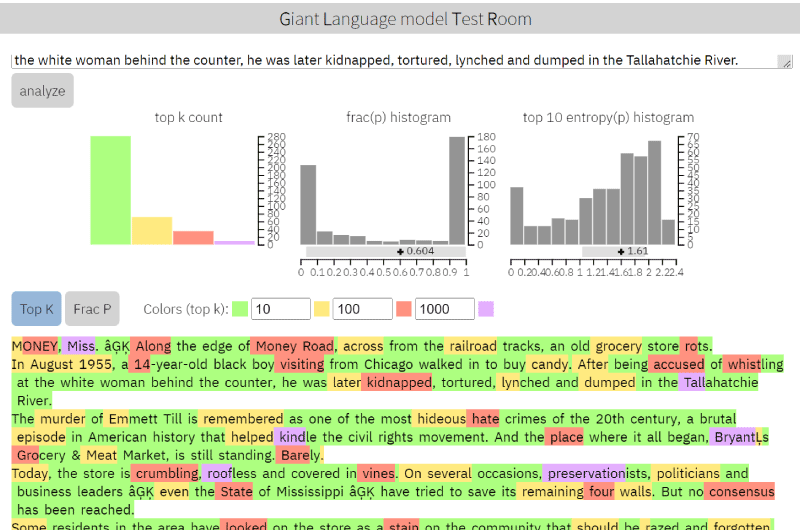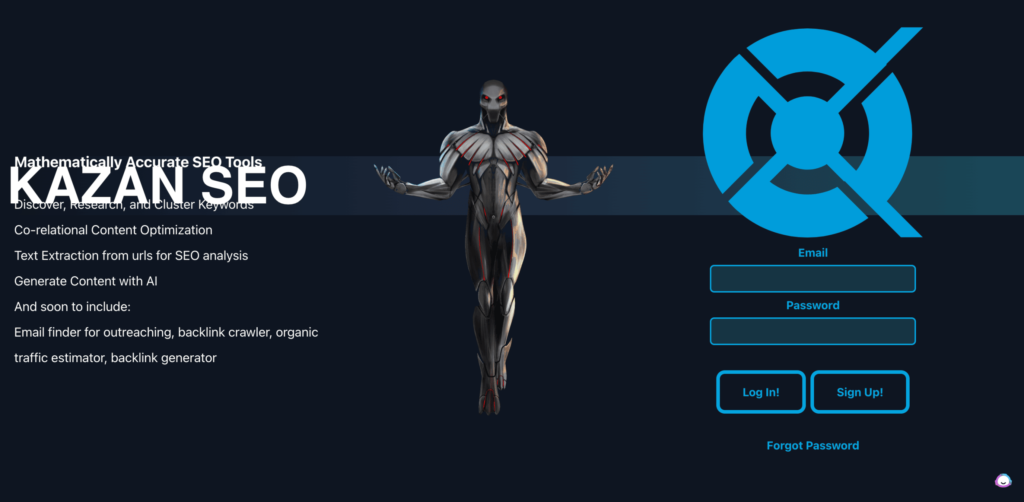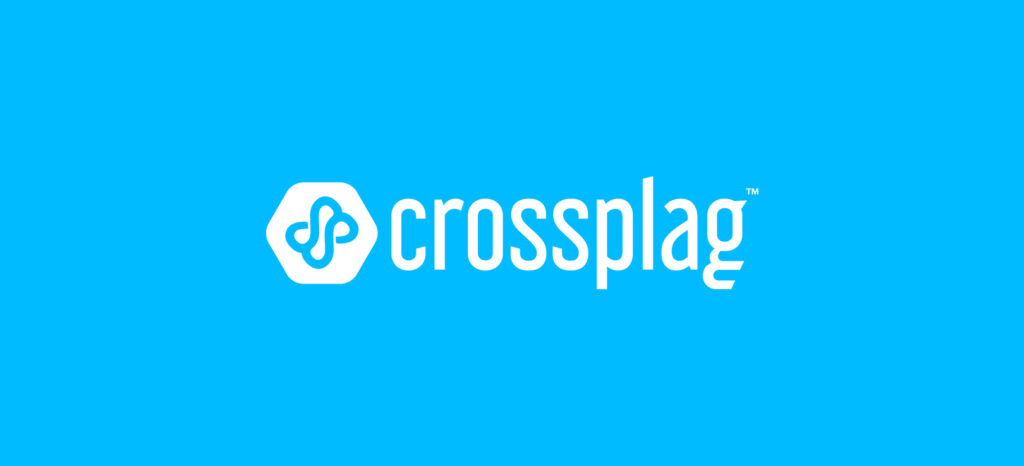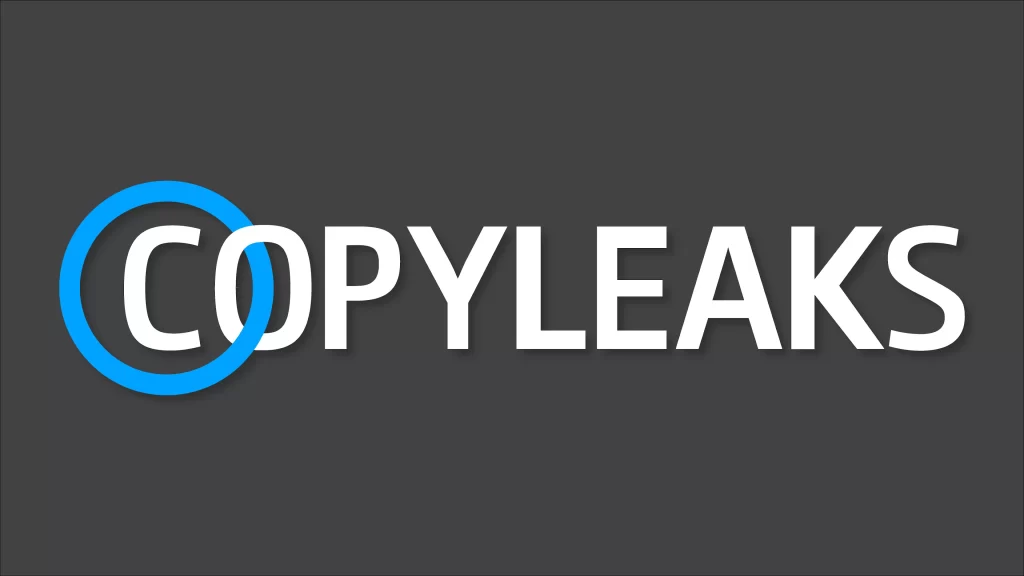Best AI Content Detector Software
AI content detectors are programs that utilize complex algorithms to search and identify information that has been generated by AI. These tools identify the areas where normal human text or content deviates from AI-generated output by utilizing natural language processing (NLP) and machine learning approaches.
This enables you to differentiate between information authored by humans and content written by artificial intelligence, guaranteeing that you can take the appropriate precautions to preserve your own original material. AI detectors are increasing in use and their relevance is seen across many fields. For instance, organizations can safeguard themselves from potential legal problems brought on by copyright breaches or other illegal actions by using AI content detectors.
ALSO, READ 10 Easy Ways To Use ChatGpt To Generate Income 2023
In order to help identify plagiarism in student papers and make sure every submitted coursework is original, educational institutions also deploy AI content detectors. AI content detectors are also a useful tool for businesses trying to safeguard their digital content’s accuracy and intellectual property. Before I’ll be highlighting the best AI content detectors in the market, here is a brief overview of how AI detectors work
How AI Content Detectors Work
AI content detectors operate by predicting the possibility of specific words and phrases in the material using language models similar to those employed by Google. By making this assessment, it is able to rate the content’s “human-likeness”.
It searches for patterns in a text by analyzing its words and syntax. It then marks it as AI-generated when it notices patterns that look like those in content produced by artificial intelligence.
The tools’ evaluation is probably based on the difference between human and AI-generated content’s use of unpredictable, repeated, and less contextually dependent words. Of this, it is obvious that AI detection tools aren’t 100% accurate. If you learn to combine words as AI does, your content will be marked as AI-generated although it is the story of how fell off the couch yesterday.
Best AI Content Detector Software in 2023
1. Originality.ai

The best and most effective AI content detection tool available is called originality.ai. It offers various helpful features including an intuitive UI, simple setup, and full site scan and has excellent accuracy when identifying AI-written content.
You can easily safeguard your work from potential plagiarism and copyright infringement with the help of this AI detection tool, which easily finds content produced with ChatGPT, GPT-3.5, and other related artificial intelligence models.
In comparison to other solutions, the subscription plan is incredibly affordable, and you can add or remove members to your subscription as necessary. It has a scan history tool that is particularly helpful because it allows you to keep track of the quantity and quality of the stuff you have scanned.
Originality.ai comes with a specific API, which makes it very simple to combine with other content creation tools you may already have. Additionally practical, the auto-renewal feature makes sure that you never run out of credits to scan your work.
The cost per credit is $0.01, which is very reasonable when compared to other AI content detection tool options. Each credit allows you to scan 100 words. One of the better features they have included in the package which keeps them top of this list is the whole site scan feature. You can swiftly and accurately scan a whole webpage with Originality.ai
2. Huggingface

With a 95% accuracy rate, the Huggingface OpenAI detector classifier sits second among the best AI content detectors. It can find 1.5 billion pieces of the text created by the GPT-2 parameter. The model can be applied to determine whether the text was produced using a GPT-2 model.
The website features a free AI detection tool in addition to being an open-source AI community where people may exchange ideas. Copying and pasting the user’s content into the box is all that is necessary to see how it rates on a “fake” to “genuine” scale.
This tool may be more useful for those who are testing longer AI-written content because results get more accurate the more content the program is provided. Despite being a pioneer, the tool hasn’t been upgraded to recognize text produced by more recent AI models, such as GPT3 and GPT3.5.
Hugging Face is also one of the most well-known natural language processing (NLP) businesses This powerful plagiarism detection module is built on cutting-edge algorithms and text classifiers that can distinguish effectively between content that was authored by humans and content that was generated by AI. Typically, the human-written text has a more consistent structure and pertinent word combinations that AI cannot consistently duplicate. The platform also provides some helpful capabilities, such as automated research and analysis, which can rapidly identify any information produced by AI.
The “Fake” to “Real” scale used by this AI content detector lets users know if the content was produced by humans or artificial intelligence.
3. GLTR

Next is a tool known as GLTR. It is one of the most thorough AI content detectors. GLTR evaluates each word in a text to determine how likely it is that it would be used there, using a colour-coded system from green to purple.
The most likely words are green, followed by yellow, red, and purple. Contrary to how it is displayed on other sites, the more red and purple results you have, the more distinctive your content is.
Having more unique words usually help your content pass AI detection tests because common words are often used more frequently in AI language models. Using this tool, you can review your writing and, as necessary, substitute the green words for other alternatives. You should expect your AI detection scores to rise as a result.
With its very informative statistics, GLTR makes up for its poor user-friendliness and intuitive design. Yes, the platform can look overwhelming. But although it could seem quite difficult to use, the tool is actually rather straightforward.
Simply insert your content and select “analyze”. After that, it will present you with a coloured output so you can edit your material. This is the only tool that provides insights on the text you may edit in your content, and it is deceptively straightforward: paste some text, then click “analyze.”
You can use this tool to determine how original your material is. Unlike other tools, it does not provide a “per cent original” score. What’s even better is that it’s free. For how sophisticated technology is and how much info it provides, this is a big steal.
4. Content At Scale

The fourth best AI content detector is Content At Scale. Content At Scale searches for GPT-3 generated content using machine learning and artificial intelligence. In order to assist you in creating original work that is free of plagiarism, this free application may also check for duplicate words, sentences, and phrases. Additionally, it uses semantic analysis techniques to detect text generated by AI and distinguish it from stuff written by humans.
A basic Human Content Score index is the metric Content At Scale used to display how much AI content a piece has. This easy display and readability of the results make it stand out from the others we’ve set far considered. Additionally, it offers an AI content writing service that guarantees to be invisible to any AI content scanners. This application supports over 100 languages and may make sure that your material is easily overlooked by AI detection algorithms. You may also easily develop website content by integrating this tool with WordPress.
If you’re looking for a free tool, Content At Scale is a fantastic AI content detector. It can rapidly and reliably identify text created by GPT-3 and is simple to use. For individuals who require assistance developing original material, it also offers an AI content writing service that guarantees to avoid detection by any AI detectors.
Overall, for those seeking free AI content detector tools, Content At Scale is a great option.
5. Writer.com

Every writing online is aware of how crucial it is to have dependable resources at their disposal to guarantee the accuracy and originality of their work. You will be thrilled to learn about Writer.com’s Artificial Content Detection because of this.
This software includes a variety of functions that help with content generation and editing in addition to allowing you to check for probable instances of machine-generated content.
This tool’s product selection is among its best qualities. A style guide, sample text, and the Cowrite feature—an AI content generator that can be trained—were all included in the product. The tool also provides numerous data security and privacy capabilities, onboarding and assistance, reporting and analytics, and other features.
The tool’s integration skills are another element that attracted my eye. It allows seamless integration to use a variety of other software, such as Chrome, Google Documents, Word, Outlook, Figma, and Contentful.
The tool also provides a wide range of tools, including manuals, webinars, events, and Cowrite templates, as well as the Writers Room Blog, which has pieces produced by authors who are educated in AI and content. Pricing options for Writer.com’s AI Content Detector include a 14-day free trial as well as “Team” and “Enterprise”, the two premium packages. The monthly cost for the Team edition, which accommodates 1 to 5 people, is $18 per user.
Pricing information for the Enterprise edition is only available by contacting sales and is not publicly available. Overall, this tool provides a wide range of features and resources that can help any author or publisher who wants to improve the quality of their material.
6. Kazan SEO

Kazan SEO is a straightforward, free-to-use all-in-one SEO solution. It also comes with a few other tools, including a content optimizer, a text extractor, and a keyword research tool based on clustering concepts. The AI GPT3 detector allows you to check an unlimited number of words for AI-generated content. The capability of Kazan SEO to do analyses in bulk sets it different from other AI content identification solutions. Simply enter every URL in the text box provided and click “Detect Urls for AI Content.”
Also, if you merely enter a website’s homepage, Kazan SEO will retrieve the top 100 results from Google and identify them. Using Kazan SEO is free. Without spending a penny, you can make AI content detections for an unlimited number of words.
But, avoid using it to generate content as there are numerous free AI writers that produce text more effectively. Use Content at Scale to generate long-form writing automatically while avoiding AI content detection.
7. Winston AI

Winston AI is a reasonably priced AI content detection program that can scan any piece of writing for AI content and plagiarism. The software, designed for content producers, educators, and publishers, can determine whether any given piece of material was produced by a robot or a human.
Winston AI allows users to upload documents in DOCX, PDF, JPG, and PNG formats, in contrast to other AI detectors. You can scan text from your Files and photographs to verify its originality thanks to OCR technology.
The program only currently supports the languages of English and French. 2,000 words per month are included in the free-for-ever plan. And you can scan 80,000 words for $14 per month. As said, it is one of the few programs that are compatible with the most widely used text and image formats, including DOCX, PDF, JPG, and PNG. You can use the program to examine your PDFs and photos for plagiarism and AI content by uploading them.
Even content that is handwritten is compatible. Also, responsive customer service is available via email and chat for both free and paid programs.
8. INK AI Content Shield

The next best AI content detector is INK AI, Content Shield. INK Suite is a platform for creating AI-based content that consists of AI Content Shield AI Writer, SEO Booster, AI Pictures and AI Assistant, and AI Keyword Analysis. You can test out all the features over a 5-day trial period that is fully functional. But, we’re concentrating on its AI Content Shield in this post.
The best aspect of this tool is that you don’t need to rely on outside programs because this feature also detects plagiarism. The best aspect is that you don’t need to rely on outside programs because this feature also detects plagiarism.
If you generate some blocks of text using ChatGPT, INK AI Content Shield will identify it as entirely Artificial Intelligence generated. However, if you edit, improve its readability and make it more conversational than academic, you can get about a 1% AI-generated score. AI Content Shield can check any URL or text to see if it contains AI. While composing an article on its platform, it also provides you with a real-time score.
It comes with a comprehensive solution for AI writing offered by INK AI Suite which includes AI templates, a tool for creating long-form articles, a plagiarism detector, an SEO optimizer, and a keyword research tool. With the use of AI SEO technologies, you can easily create lengthy documents that are SEO-optimized. It can also turn text into images in a few seconds. However, it isn’t ranking high on this list because of its very limited free option.
There are two pricing tiers for INK Suite: Professional and Enterprise. You can develop a limitless amount of AI material, including photos, with either of the two options. The professional package costs $39/mo and contains all features and unlimited AI content. The best option for teams, however, is the Enterprise package at $99/mo. Team performance tracking and premium assistance are included.
9. Crossplag

The newest player in the AI text detection market is called Crossplag. This user-friendly web tool has a respectable level of accuracy in identifying text produced by AI. Crossplag uses powerful machine learning techniques and natural language processing to identify the distinctive patterns in the text produced by artificial intelligence. Results are shown on a severity scale from green to red, with green denoting user-generated material and red denoting artificial intelligence.
10. Copyleaks

Last on the list of best AI detection software is Copyleaks. This is an AI-powered tool for detecting plagiarism. It can also function as an accurate AI content detector and provide findings, though. In addition, according to its website, it can recognize content produced using either ChatGPT or the newest GPT 3.5 model. The ability of Copyleaks to find a text from almost any NLP model, including the newest ChatGPT3, is its most crucial feature.
In a test, it reported a 92% AI-generated text for a text that was generated entirely by AI. The software was accurately able to determine that the content was generated by AI. The beta version of Copyleaks’ AI text detector is available for free usage. But, depending on the pages, you will need to pay anything from $10.99 to $184.99 for further detection.
How Effective Are AI Content Detectors?
The greatest AI content detectors might have limits because this technology is still in its infancy, which makes it challenging to bank on their results. For instance, a test was conducted on some pieces of text produced by an AI writing tool. They were presented to 3 of the best AI content detectors listed above: Writer, Content at Scale, and Originality.ai and they all produced varying scores In that test, Originality.ai, the exclusive AI content recognition tool, returns a score of 49%, which is the closest to the actual outcome. All other AI content detection systems make the false assumption that the text was created by a human.
When the same text was presented to Winston AI, it produced a human score of 69%. So, these tools can spot probable AI-generated content, but they cannot definitively say whether the content was produced by AI. Also, AI-written content might be graded as human-written language if you make a few spelling mistakes. This renders the entire operation useless.
Conversely, Content at Scale is the only AI tool on this list that can produce AI content that gets past AI content detectors, making it a crucial tool for digital marketers. These tools are a fantastic place to start if you want to future-proof your website content, even though you still can’t rely on them to check for AI-generated content.
Can Google Detect AI-Generated Content
If you’re reading this, you might be wondering whether or not Google can identify artificial intelligence-generated content. Clear information is still lacking because pertinent technologies have not been developed enough.
John Mueller, Google’s Search Advocate, however, makes it clear that AI-generated material is against Google’s policies. In addition, the webspam team would quickly classify it as spam if they happened to notice it. It wouldn’t thus show up on the search results pages (SERPs).
Take this information seriously if you run an internet business or maintain a website that depends on web content. New algorithms will be developed in the future to address the fact that Google is currently not entirely successful in detecting AI material. Take the necessary precautions by making sure all of your material is human-written if you don’t want to run the danger of Google identifying it as AI (or, worse, spam). Alternatively, if you’re using AI writing tools, don’t just copy and paste the stuff they generate; instead, add your own spin to it and make changes to make it more distinctive.
After all, we all want to find high-quality, pertinent stuff on the web. What is your opinion regarding the topic you are writing about? What are your impressions of it? The reader is interested in knowing that. This is related to Google’s Helpful Content Update from 2022, which eliminated articles with excessive keyword use for the sole purpose of improving the author’s search engine ranks.
Conclusion
For their online content business, SEOs and digital marketers have been employing AI content authoring solutions like Jasper AI, Copy AI, Anyword, Article Forge, and others for the past few years. Despite being useful, these tools are only helpers. It is not recommended to copy and paste the text produced by these AI systems exactly as it is.
Several websites that have popped up in the previous few years and employ these technologies to publish dozens of articles each day may see a looming day in the near future as AI-detecting algorithms progress and Google starts classifying them as spam. Use these recommended best AI content detectors to future-proof your content.



Recently, trends in domain name registration have been surprising. For the first time in the history of the Internet, there has been a statistically significant reduction in the number of registered domain names. Many doomsayers proclaim that the reason such a trend occurred is the popping of the Internet bubble, the death of E-Commerce, the burning of Silicon Valley, the Y2K bug, the Four Horsemen of the Apocalypse. Such is not the case; to the contrary, there is one obvious over-arching cause that does not suggest the imminent or recent doom of the online world, but rather its gradual redemption.
That cause is Google. Never before has there been such an effective and seemingly foolproof search engine on the Internet. Webmasters no longer find it necessary to register every possible mutation or misspelling of the site’s name with Internic. Previously, in the ages of less-effective search engines, simply typing website in as a URL and crossing your fingers was not that much less viable than taking the trouble to sort through thousands of false Yahoo results to find the true company site on the eighteenth page of results.
Now, however, the most prominent search engine on the Web, Google, is eerily accurate at knowing what you want and where to find it. It is no longer necessary or even advisable to register extraneous domain names in the hopes of capturing a shot-in-the-dark visitor. Doing so means dividing other peoples’ links to you among all of your different DNS entries, which, due to the mechanics of Google’s PageRank algorithm, translates to a counter-intuitive reduction in your site’s priority on Google. Because the number of users who use Google to find a given site far outweighs the number who use the out-of-date aforementioned shot-in-the-dark method, it is wise to choose to cater to the Google crowd. Google has succeeded in superimposing the best interests of a site’s owner with the best interests of the public, and the result is a cleaner, more efficient Internet.